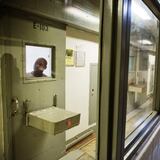President Donald Trump, who tested positive for the coronavirus early Friday, went to Walter Reed National Military Medical Center in Bethesda, Maryland, and was expected to stay overnight, possibly longer.
Here are five facts about the nation’s largest military medical center:
1. Walter Reed Army Medical Center and National Naval Medical Center were combined in the fall of 2011 at the direction of Congress. It is now known as Walter Reed National Military Medical Center. It is a military treatment facility, signified by the Army colonel who is its director and a Navy command master chief. It also has Army, Navy and Air Force leadership in its chain of command.
2. The medical center, also known as Walter Reed Bethesda, sits on 243 acres and includes 100 clinics and specialties. It has about 7,000 staff members. It began as Walter Reed General Hospital in 1909, according to an article about its history.
3. Also known as the President’s Hospital, Walter Reed provides care for members of the military and their families, the president, vice president, members of Congress and Supreme Court justices. When authorized, the medical center also provides care for foreign military members and embassy personnel.
4. Walter Reed is located outside Washington, D.C., on Rockville Pike in Bethesda, Maryland, just under 9 miles from the heart of the nation’s capital. The center includes a suite of offices for the president, which is equipped to allow him to work from there. The suite, operated by the White House, includes a secure conference room in addition to medical facilities, according to NBC4 Washington.
5. Its namesake is Major Walter Reed, who became known as a researcher who helped prove that yellow fever is transmitted by mosquitos. Yellow fever, caused by a virus, was a source of deadly epidemics, and Reed called for mosquito control programs in areas where yellow fever had been a problem, according to a PBS News Hour article. He died in 1902 at the age of 51 of complications following an apendectomy.
About the Author
